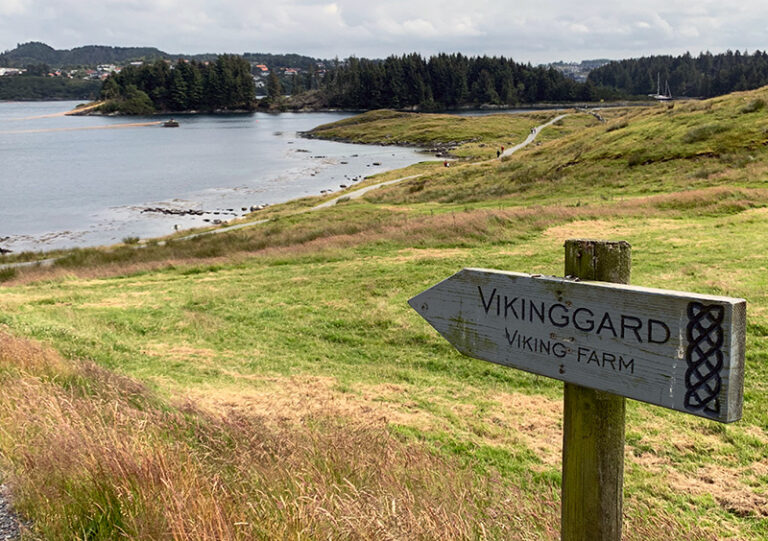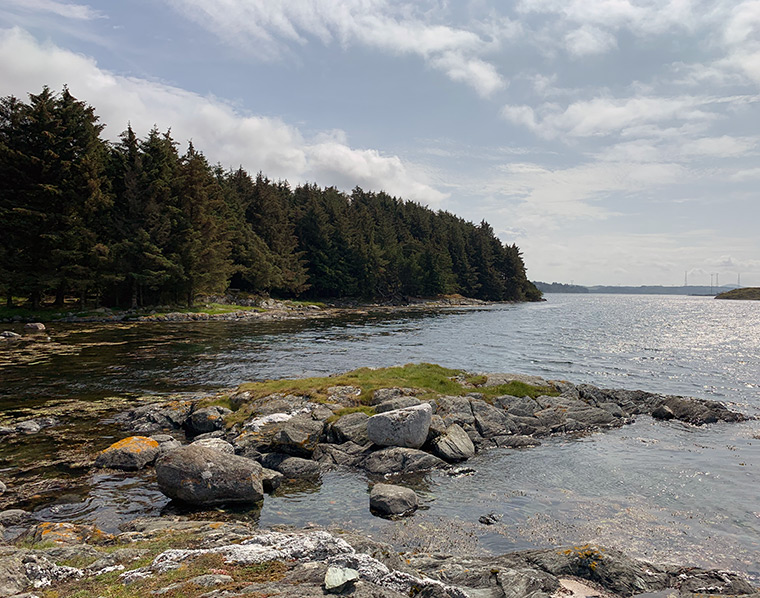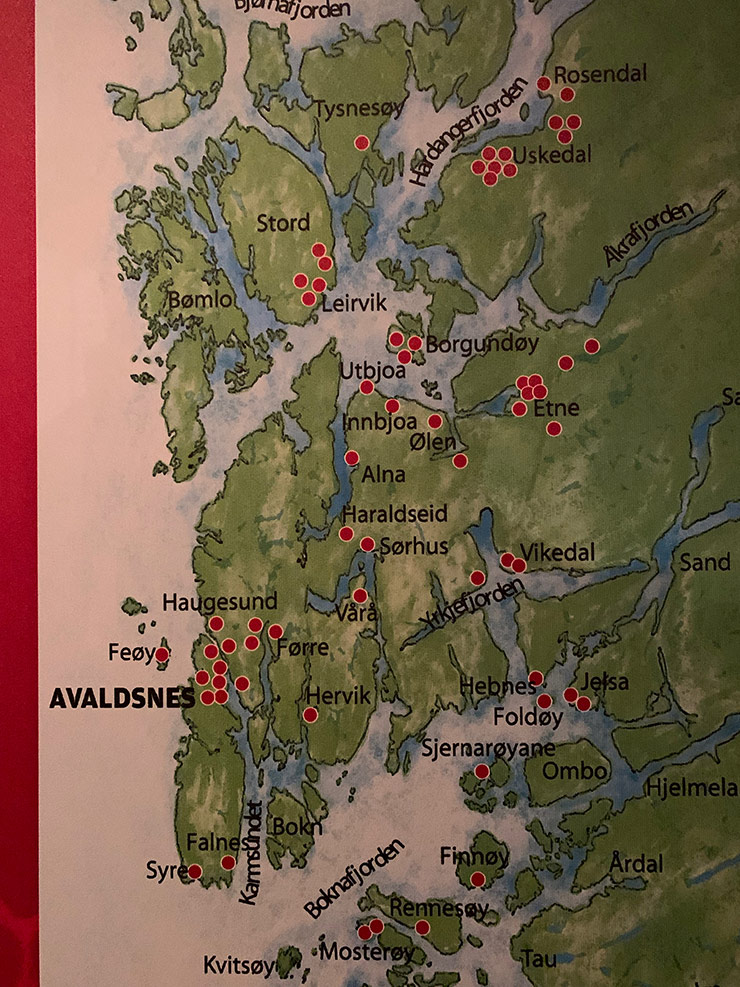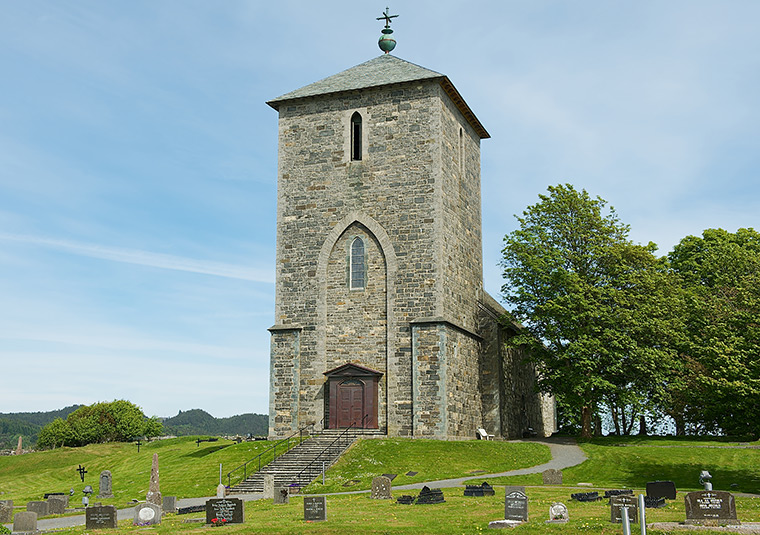
A trip to the viking farm and Nordvegen history centre at Avaldsnes, near Haugesund in western Norway.
Since moving to Norway I've become more interested in the country's viking past. I've watched documentaries, read several books and even started a viking blog.
But one thing I haven't done much of is visiting some of Norway's historic sites from that era. This summer, I decided it was time to change that, so a trip to Haugesund it was.
From Trondheim, I was able to get there without my own transport. However, it did involve two flights via Oslo to Haugesund, a taxi ride to Haugesund and a local bus to Avaldsnes. Then, a 25 minute walk! Thankfully I was in Haugesund for more reasons than just this trip.
Watch my video from the Viking Village:
A historic island
The Nordvegen History Centre and Viking Village are actually located near Avaldsnes on the island of Karmøy, a short bus ride from Haugesund. There's about 34,000 people living on the island itself. It's also home to Haugesund airport, heather moors and white sand beaches. But Karmøy is most famous for its Viking history.
“In historic Skudeneshavn you are welcome to follow 18th century figures on an exciting trip through the history of the town. Skudeneshavn is a still-thriving, real-life 19th Century clipper town,” says the local tourism website. But it's the history from many hundreds of years ago that brings me here.
Avaldsnes was home to Norway's first viking king, Harald Hårfagre. Known as Harald Fairhair in English, the king was said to be the first to unite Norway's kingdoms into a single crown.

Today Avaldsnes is home to Saint Olav’s Church, the Nordvegen History Centre and the Viking Farm. Let's take a look at all three in turn:
Nordvegen history centre
When I first arrived at the history centre I wondered if I was in the right place. That's because the museum itself is entirely underground, built that way to preserve the natural landscape. All you see from above is a staircase and lift down to the entrance.
While it's a great idea, the fact that two enormous industrial ships were docked just around the corner sort of spoils the point!
The museum is named after The Northern Way (nordvegen), from which Norway takes its name. The name referred to the shipping and trade routes, of which the Karmsund strait here at Avaldsnes was an important part.

Inside I watched a 15-minute film introducing the vikings and the Norse beliefs. It was hilariously badly dubbed, but informative nevertheless! I then moved on to the museum. Here there are exhibitions about Harald Hårfagre, and the other princes and kings who ruled the region.
The viking farm & village
The viking village is set on a lovely wooded island, a 10-minute walk from the museum. The village is hosted by four actors dressed as the chieftain, his wife and their sons. I joined a guided tour led by the chieftain's wife.
We toured the viking longhouse that included an open fire and the chieftain's bragging room, before hearing stories of the lifestyle and some of the Norse myths and legends. There were a few activities to take part in including archery and a few other buildings to explore.
If you come, definitely try to join a guided tour, all of which take place in English. Watch the video towards the top of this page for a sneak preview. Also, make sure to allow some extra time for a walk around the the island's coastal paths.

In June every year, the farm plays host to one of the best viking festivals in Norway. The four-day festival features western Norway's largest viking marketplace, along with weapon demonstrations, arts and crafts, storytellers, jugglers, musicians, and more.
The church
Unfortunately the church was covered in scaffolding on my visit, the same fate that occurred on my recent visit to Levanger! But there's still plenty to learn about the church in the history centre. Also, plenty of pictures I can share of what the church usually looks like!
The current church was built sometime around 1250 by King Håkon Håkonsen, but it's presumed there had been a previous wooden church there built by Olav Tryggvason a few hundred years prior. The church is surrounded by burial mounds from pre-christian times, something which can also be seen in parts of Sweden and Denmark.

Experts have concluded that the early Christian kings of Scandinavia acted strategically. By seeking out areas that were already culturally established to introduce new faith and rituals, there was less chance of things going awry.
To the north of the church stands an obelisk known as “Virgin Mary’s sewing needle”. Many myths and legends surround the obelisk. The least interesting but most famous is that the obelisk creeps towards the church by a few millimetres each year. When it finally touches the church wall, doomsday will come!
Getting to Avaldsnes
As long as you don't mind some walking, you don't need a car to visit the museum and farm from Haugesund. Simply take one of the green buses that run from the town centre to Avaldsnes. At the time of writing, that's buses 209 and 210. The ticket costs just 37kr when bought in advance from a shop or the mobile app.
You have to pay more on board, so it's worth doing. Check the public transport operator Kolumbus for the latest information.
From Avaldsnes, it's a 15-minute walk to the museum, and a further 10 to the farm. Make sure to buy your ticket at the museum first if you are heading straight for the farm!


Thanks for this article. Been there several times. My father grew up on Karmøy, just up the road from Skudeneshavn. I still have numerous relatives living on the island.
My father also immigrated from Karmoy.
My family on both sides is from Karmoy, and my father is buried at Avaldnes Church. It was nice to read your article and see pictures as I live in the USA. 👍
My paternal grandparents were born on the Heggheim (Heggem) and Vik farms on Karmøy.
My paternal grandparents were born in Skudeneshavn. The best I can determine is my grandfather was Olaus Holland b. 1871 and my grandmother was Lovisa Hendrickson Sandve b. 1875. My grandfater emmigrated to the USA in 1888 and my grandmother emmigrated to the USA with her family when she was a child. Some records indicate my grandfather’s name in Norway was Asgout Olaus Gregoriussen. I hope to visit Norway and search for more information.